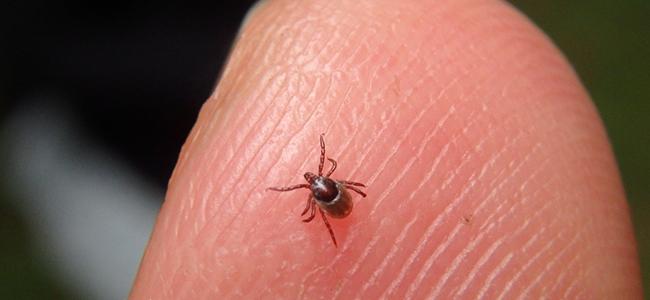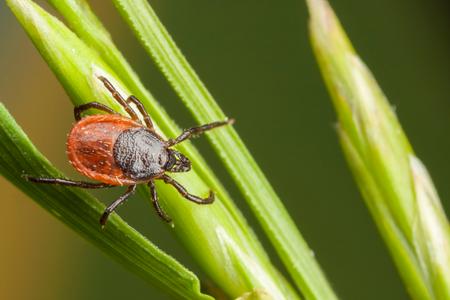
The Best Tick Control For Maryland Properties
10/01/2021
In Maryland, we have some of the most enjoyable weather (for most of the year) for playing out in the yard and enjoying time with our pets. Unfortu...
READ MORE >
Children, especially boys aged 5 to 9, are most at risk for contracting Lyme disease from infected ticks in Montgomery County. While Lyme disease awareness generally peaks in May, we think it’s important to remain focused on tick prevention year-round.
Historically, the number of reported cases of Lyme disease ramp up in April, become highest in June and July, and begin to taper in the fall. This may seem contradictory to beliefs that ticks are somehow more noticeable in the fall, which actually has a lot to do with the 2-year lifecycle of the Deer tick—the primary transmitter of Lyme disease in humans and pets.
What is Lyme disease?
Lyme disease is an illness caused by a bacterial infection contracted from the bite of an infected blacklegged tick (Deer tick). Learn more about how to identify blacklegged ticks in Montgomery county here.
What are the symptoms of Lyme disease?
Symptoms of Lyme disease vary widely from person to person, and may go undetected for weeks to even months. The earliest and most recognizable indication of Lyme disease is an expanding rash or redness originating at the site of the tick bite, however, as many as 50% of people who have been diagnosed with the disease do not recall noticing a rash or bite mark. Other early symptoms of Lyme disease may include fever, tiredness, headache, and body aches. Many people may live with complications from Lyme disease over several months, even years. When left untreated, joint pain, neurological problems, and paralysis have been known to occur.
How are children affected by Lyme disease?
A growing number of cases of misdiagnosis (or false negative) from blood tests alone, present significant challenges for parents of children suffering from the debilitating effects of Lyme disease. Muscular weakness and extreme tiredness will often keep children from attending activities, playing sports, and cognitive impairments or short term memory problems become troublesome in the classroom. Symptoms that fluctuate over time make it especially important to keep a log, or timeline, of events and complaints to share with physicians.
How can I protect my children from Lyme disease?
We know that children are more susceptible to contracting Lyme disease, partly due to the amount of time spent playing outdoors in grassy or wooded areas, and the increased likelihood that a tick as tiny as the head of a ball point pen may go unnoticed. Keep these suggestions in mind for outdoor play time, year-round.
Treatment for Ticks in Montgomery County
Ticks that carry Lyme disease in urban environments are brought in on mice and white-tailed deer, particularly near homes and businesses that possess landscape features conducive to harboring ticks and their hosts. Most ticks will be found around perimeter/boundary areas, ornamental plantings, and stone walls. The prevalence and volume of ticks in outdoor spaces where our children play also depends on the amount of shade and moisture available. Treatment to boundary areas with a pesticide application, and in other targeted areas, is the most effective way to reduce the number of ticks found in backyards. Treatments are typically conducted as early as March or April, and continue through September or October.
For more information on tick control solutions in Montgomery County, simply contact American Pest.

10/01/2021
In Maryland, we have some of the most enjoyable weather (for most of the year) for playing out in the yard and enjoying time with our pets. Unfortu...
READ MORE >

09/03/2021
Healthcare facilities, such as hospitals, nursing homes, rehabilitation centers, and emergent care centers must maintain a strict level of sani...
READ MORE >

08/23/2021
Ticks are considered to be some of the most dangerous arachnids around. Not only are they famous for biting people, pets, and wildlife creatures, b...
READ MORE >

07/15/2021
Each year, tick populations are on the rise. This is due to a multitude of factors, including climate change and increased tick habitat. Frederick ...
READ MORE >

Protect your home and family from nuisance and potentially damaging pests with a Preferred Care home pest control plan. Starting at $49/month

Don't let the bed bugs bite a second longer. Contact American Pest for the most comprehensive bed bug control in the industry. Learn More

Our certified rodent control pros will put an end to your frustration by getting rid of rats and mice inside your home. Learn More

Say goodbye to wood-destroying termites in your home when you contact American Pest for expert termite control. Learn More

Trust American Pest to deliver professional backyard tick control services that are guaranteed to get results. Learn More

Don't spend the warm-weather season indoors, find out how American Pest's professional treatments get rid of mosquitoes. Learn More
Fill out the form and recieve feedback in less than 5 minutes. For immediate service please call.